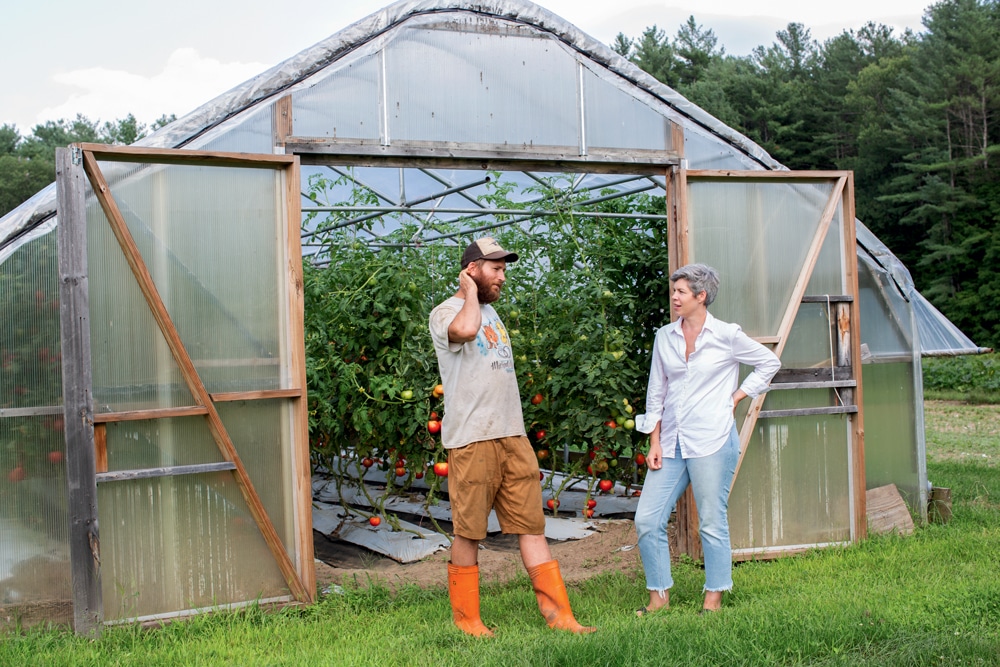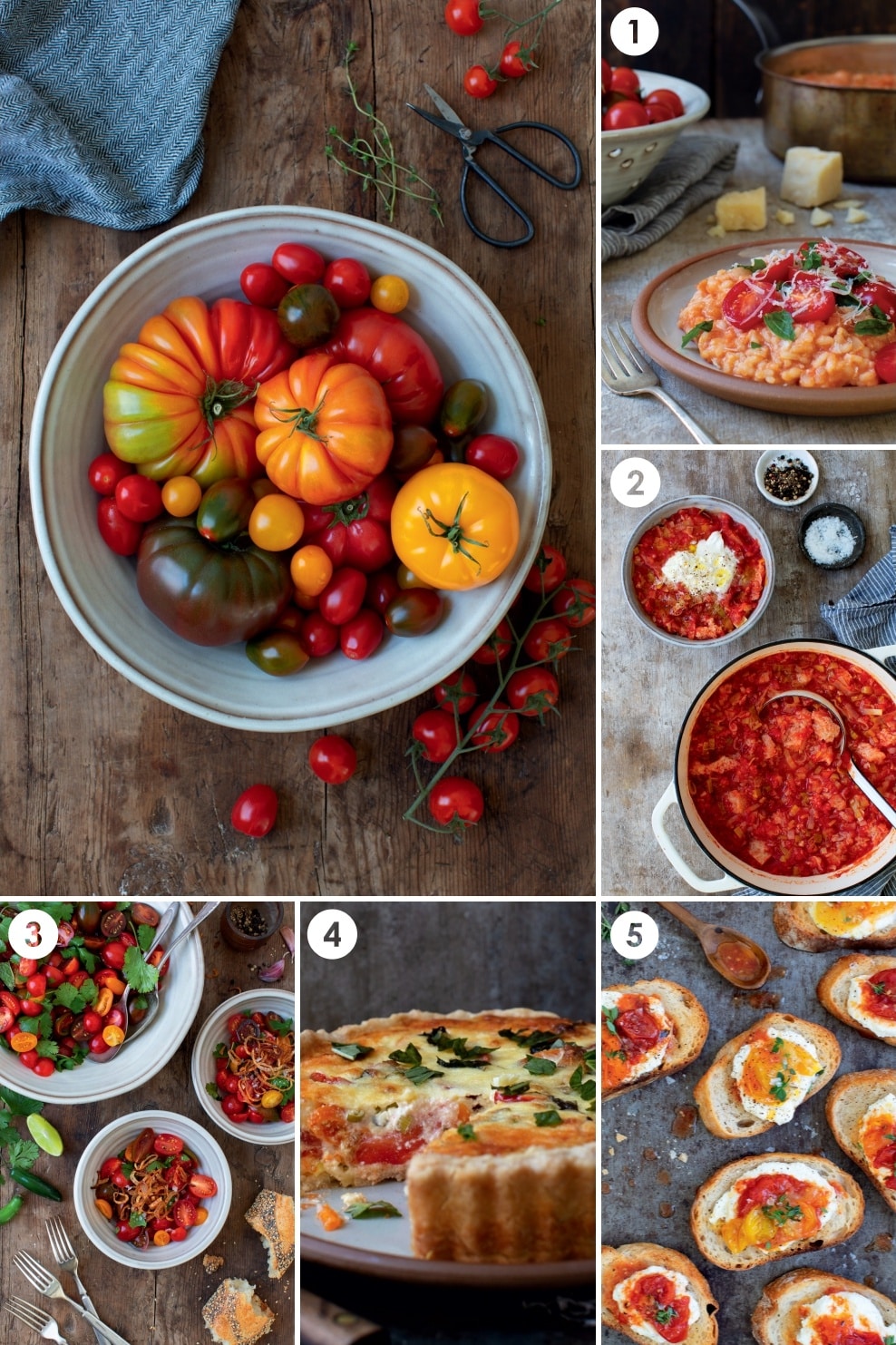The Jewels of Summer | In Season
At New Hampshire’s Edgewater Farm, the late summer tomato harvest is the sweetest season of all. Here are five delicious recipes to make the most of your summer tomato haul.

Tomatoes truly are the jewels of summer.
Photo Credit : Lori Pedrick | Styling by Liz Neily
Photo Credit : Lori Pedrick | Styling by Liz Neily
Ray Sprague disappears for a second, then pops up at the end of a row between two towering Purple Russian tomato plants. He’s holding an oblong, deep-red fruit. “This one’s my favorite,” he says with a grin, before encouraging me to bite into it like an apple. I oblige, spraying juice and seeds down my shirt: There’s nothing quite like a ripe, sun-warmed summer tomato.
It’s August at Edgewater Farm, a 220-acre swath of alluvial soil in Plainfield, New Hampshire. The fields are full, the farm stand abundantly stocked. It’s a time of riotous profusion. The greenhouses, where a majority of the 60 varieties of tomatoes are grown, resemble jungles, with some tangles of plants dwarfing even Sprague, who stands 6 foot 5. Stems bend beneath the weight of tomatoes of every size and description, ranging from tiny orange Sun Gold to Chile Verde, a green-fleshed tomato with a blush of yellow. Out in the fields, the red slicing tomatoes ripen under the long hours of sunlight.

Photo Credit : Lori Pedrick
The farm was founded in 1974 by Sprague’s parents, Pooh and Anne Sprague, who continue to run the business with Ray and his sister, Sarah. What began with ornamental plants, strawberries, and asparagus has blossomed into a diversified operation with pick-your-own strawberries, a CSA, and a wholesale operation that sells produce to the greater Upper Valley region. At the timber-framed seasonal farm stand, visitors can select choice produce and stock up on farm-made pesto, salads, and frozen entrées packed full of Edgewater vegetables.
Every crop receives attention, but Sprague admits that he’s “gotten a little nutty” about the tomatoes, particularly the 40 or so heirloom varietals and 10 types of cherry tomatoes he plants each season. The work begins in March, when he starts the process of grafting each heirloom tomato seedling onto a rootstock to improve the plant’s vigor. After some time in the propane-heated greenhouses, and once the threat of frost has passed, the starts are transplanted directly into the nutrient-rich soil. With luck, cooperative weather, and the tempering effects of the greenhouses, the Edgewater team will be picking the first tomatoes around Independence Day and the last in November—an impressive run, by New England standards. In a single season, each 21-by-96-foot greenhouse cranks out between 4,500 and 7,000 pounds of tomatoes.
Sprague’s obsession is a boon for his customers. In the height of summer, it’s not uncommon to see a kaleidoscopic array of tomatoes for sale at the farm stand: fat, heavy slicers ready for a BLT; jewel-like cherries to be eaten in the car on the way home; tomatoes perfect for risotto or for a simple herb-packed salad. A far cry from the pale red baseballs that flood the markets in the colder months, these tomatoes—picked ripe and, Sprague stresses, never refrigerated—are the jewels of summer, as precious as any gem.

Photo Credit : Lori Pedrick


